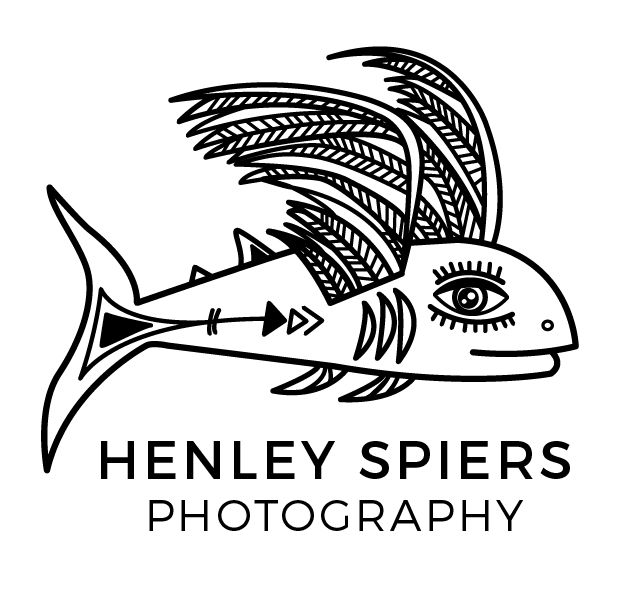How Did You Do That? Chat | City Frog
‘While You Sleep’ by Mark Kirkland
Mark Kirkland’s photograph of a city frog at night is one of the most impressive images we have seen lately, deservedly winning him British Underwater Photographer of the Year and Backyard Photographer of the Year in UPY 2021. Here he shares the full, gruelling story behind its creation with the Shot Chat team, and one cannot help but come away even more impressed by both the shot and the photographer behind it.
Shooter | Mark Kirkland
Mark is one of the brightest young talents of the British underwater photography scene (even if you would never catch this humble Scot admitting as much).
Admirably, he focusses on creating imagery close to home, and his distinctive vision, coupled with a tenacious work-rate, has yielded an impressive portfolio - showcasing life and nature that many of us overlook.
His efforts have been rewarded in multiple competitions, with the highlight being winning the British Underwater Photographer of the Year title in 2021.
Find him at www.markkirklandphotography.com and on Instagram
Part 1 | Conception
Is this image and composition something you planned in advance?
Mark Kirkland: Okay, so the real inception for this shot was probably towards the end of 2017. I had been shooting underwater for a few years but it had only really just started to get a real grip on my imagination.
I'm a huge admirer of the freshwater photographer David Herasimtschuk, who produces remarkable shots in the rivers and lakes of North-East America, and his most captivating works are, I think, his close focus wide-angle split shots of amphibians.
Early success from the inner city pond in 2018, with this shot, ‘Proud Parent’, coming 3rd in the UPY British Macro category.
I wondered if I could find similar opportunities close to home. Frogs are common in the UK, but despite that I had no real clue about their life-cycle or where and when to see them, so I started my research. I downloaded some fairly dated research papers on the local populations, contacted countryside rangers and wrote to some conservation charities. I quickly had plenty of potential sites.
I had read that common frogs come out of hibernation when the air temperature is consistently over about 5°C. Despite my best efforts, I spent day after day driving to different locations to find empty ponds (too early) or ponds filled with spawn but no frogs (too late). Eventually, after almost two weeks of trying, and on the day I was ready to give up, I came across this little muddy urban pond in Glasgow. I spent a full day there, lying in the mud, holding my camera in the water and snapping splits with a 14-42mm lens. One of these images went on to place third in the Close-Up category of British Macro category at UPY 2018.
Early experimentation with freshwater splits, a useful learning curve for photographing common frogs.
Split shots should bring a dimension to the underwater world that never truly connect. You're either underwater or you're not - so they can offer a totally unique perspective. I just think they're great fun, and full of possibilities. I'd messed around with freshwater splits for a few evenings in summer 2019 - trying to get shots of sticklebacks. But as a subject they are too small and unpredictable so you really need to find a big shoal of them. I had the most amazing sunset for this shot, but just not enough fish. It was still good practice for my froggy shoot though.
I had read the frogs are even more active at night, and I felt this site - overlooked by imposing tower blocks - had the potential to produce something different. I had already started dreaming of doing some sort of long exposure night-time splits and had toyed with jellyfish in the past with no success. I just needed the right subject and the frogs seemed ideal. I returned a year later, in March 2019, however a particularly dry year had turned to the pond to mud. It wasn't until the spring of 2020 that I got the chance to try and execute my vision.
Part 2 | Getting the Shot
Equipment: Olympus OMD EM5 MKii with Panasonic 8mm Fisheye and two Sea and Sea YS-110A strobes. I had a chopped up plantpot on the one lighting the frog to try get a bit of control and atmosphere. I was using the Olympus Imageshare App on my phone as a remote trigger.
4" Precision mini-dome which with the 8mm fisheye is an absolute dream for CFWA as I can focus on things literally touching the dome.
Location: Pond in Malls Mire, Glasgow, Scotland.
The pond in Malls Mire, Glasgow, during the day.
Time: Shooting started about 9pm till 1/2am. That shot was taken at 9:55pm in March.
Water conditions: I was shooting in about a foot of water with my camera resting on some rocks and mud. Vis, probably 18 inches and very easily stirred up. No idea about water temp but air temp was between 2°C and 5°C on most nights.
Other gear: Multiple cosy layers, waterproof trousers and jacket. Small torch as a focus light.
Help: Most background info came from downloading old research papers.
Settings: The final shot was a 20 second exposure, f16 ISO 1000. Strobes about half power given I was shooting with such high ISO. Front sync flash. Focus - Touchscreen Spot AF using the remote app. As I was shooting long exposure, I couldn't use a focus light so used a hand-held torch to gently light the frog (trying not to scare it away), got it in focus and hit the shutter button then pulled the torchlight away just before the camera actually took the shot.
It was all about trying to strike the balance between image quality, depth of field and capturing enough light (same old story really). The EM5 MKii has been a great camera, but it doesn't too cope well with low light so even pushing it to ISO 1000 gave me a nosebleed. However, I felt I needed that as the background is plays such a huge part in the shot - I wanted to try get it sharp front to back. Unfortunately, when your subject places itself 1cm from the dome, even at f16 only the frog and the spawn stayed relatively sharp. That left me with shutter speed to try get enough light in, and 20 seconds worked well for getting the moon and the buildings properly exposed. Thankfully, frogs do like to sit motionless so movement was only an occasional problem.
The Story
One important thing I learned about the frogs is how unpredictable their behaviour is. In wildlife photography, we all know the importance of spending time with our subjects, getting used to their patterns so we can predict where, when and how they'll be. We also need to gain an understanding of how to adapt our own behaviours to them - what movements and noises make them retreat, and what puts them at ease. Frogs..... they just make up the rules as they go along.
When I shot them during the day in 2018, it was a simple case of spending time around them and they get used to your presence - at times they were even curious. But this time round, in the pitch black, they were much more arbitrary. So at this point I'm set up in the pitch black, my gear in the water and using a small torch as a focus light which I would then quickly switch off as I pressed the shutter.
At times, the frogs were completely comfortable with the light - even curious. They would congregate around my gear, usually at the back of my camera and I could wander around freely. Then at the drop of a hat (whatever that means), they would scarper in unison into the thick weeds.
I had taken a tripod with me, but it was bigger than the water depth so the entire frog shoot was just done by carefully sitting the housing on a muddy slope of the pond. Every movement stirred up a lot of mud, so I had to try to keep that to a minimum.
I could sit in the pitch black for 45 minutes without a single frog visible. Then slowly, a crescendo of croaking would start and it would be all action for a few minutes - splashing and grabbing each other, then all of a sudden they would all stop and sit perfectly still for 20 minutes. Almost always out of frame.
I think on the first night I was still using the 14-42mm lens, and got a few okay-ish shots. Nothing special. And I was struggling with the focus so they're a bit soft. I decided to switch to the 8mm fisheye the following night.
First night with the 14-42mm lens.
First night with the 14-42mm lens.
First night with the 14-42mm lens.
The best place to shoot the first few nights didn't have any frogspawn, but over the nights it started filling up. So I tried positioning one of my strobes behind the frogspawn. I didn't have a remote strobe trigger so I had use a rock to weigh the fibre optic cable down and out of frame. The strobe itself I had to weigh down with a few rocks - which of course then meant a half hour wait for the silt to settle. I think that's the basics of the setup and the frogs.
The weather was the next thing - it was intermittent showers and clouds the entire time. When it rained, I had no option but to lie in the mud with my hood up, in complete darkness and wait for it to pass. The longest it rained was probably over an hour and at one point I started to question what my life was actually all about. And of course, when it stopped raining that meant trying to find a bit of fabric which wasn't completely covered in mud so I wipe droplets off the dome port (cue: frogs darting into the weeds not to be seen for another hour).
Keeping the dome clean was one thing. The strobes also go to sleep after a period of time, so I hadn't shot anything for a while I had to remember to fire intermittent shots just to keep them awake. If not, it was reaching back into the pond to turn them off and back on again.
With the camera on for 4-5 hours at a time, battery changes were a mess. Unfortunately, this sometimes meant getting moisture inside the housing which would show up in the shots (sometimes not noticed till I had them back on the laptop).
So inevitably, when I had a clean dome port, and the frogs were out, and the strobes are ready to fire, and the sky was clear and the moon was in position..... the connection to my phone would fail. This sometimes meant reconnecting via the phone, but often needed me to pull the camera out the water and go back through the manual connection process.
I'm wondering if it's starting to become clear why the final shot took me 5 nights to finally capture.
“At around 9pm I’d start wondering what the frogs were up to. The temptation was just too much. I ended up there 5 nights in a row, often ready to chuck in the towel after a few hours but then sticking it out till 2 and 3am.”
After the first night, having not gotten to bed until 3:30am and up for work at 7, I thought I'd had enough. Every single inch of me, my bag, my equipment, torches, phone, flask all came back completely covered in mud. My car was a riot after the first night. But on every following night, I'd be sitting at home like a burst couch, and at around 9pm I'd start wondering what the frogs were up to. The temptation was just too much. I ended up there 5 nights in a row, often ready to chuck in the towel after a few hours but then sticking it out till 2 and 3am.
It's also worth saying that down at the pond level it's completely pitch dark, and the entire time I have in the back of my mind the thought that a good citizen of Glasgow (I mean that with all sincerity) might come and ask me what I'm doing. Amazingly, over the 5 nights only two dog walkers passed by - one of them stopped and we chatted - he was genuinely curious about what I was up to. So that was it - just me, some frogs, a flask of tea and a sleeping city.
Oh! I was messing about with spotlighting them for a while. Nothing that really worked though. I just got lucky with the frog position in shot that won BUPY
Can you share some other frames from these shoots? Either moments of breakthrough which led to the image we see now, or other strong frames which you considered before settling on this one as the best?
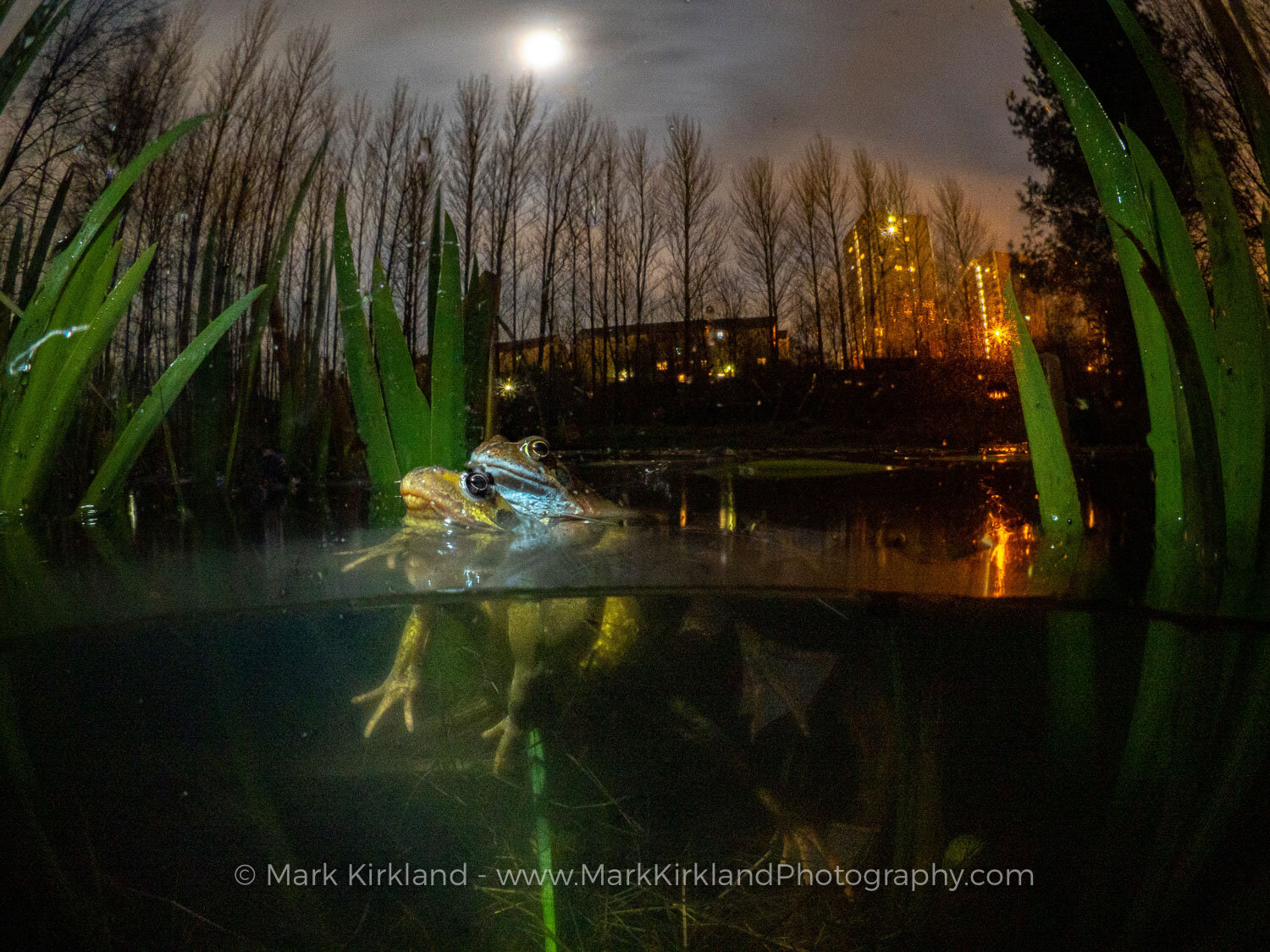

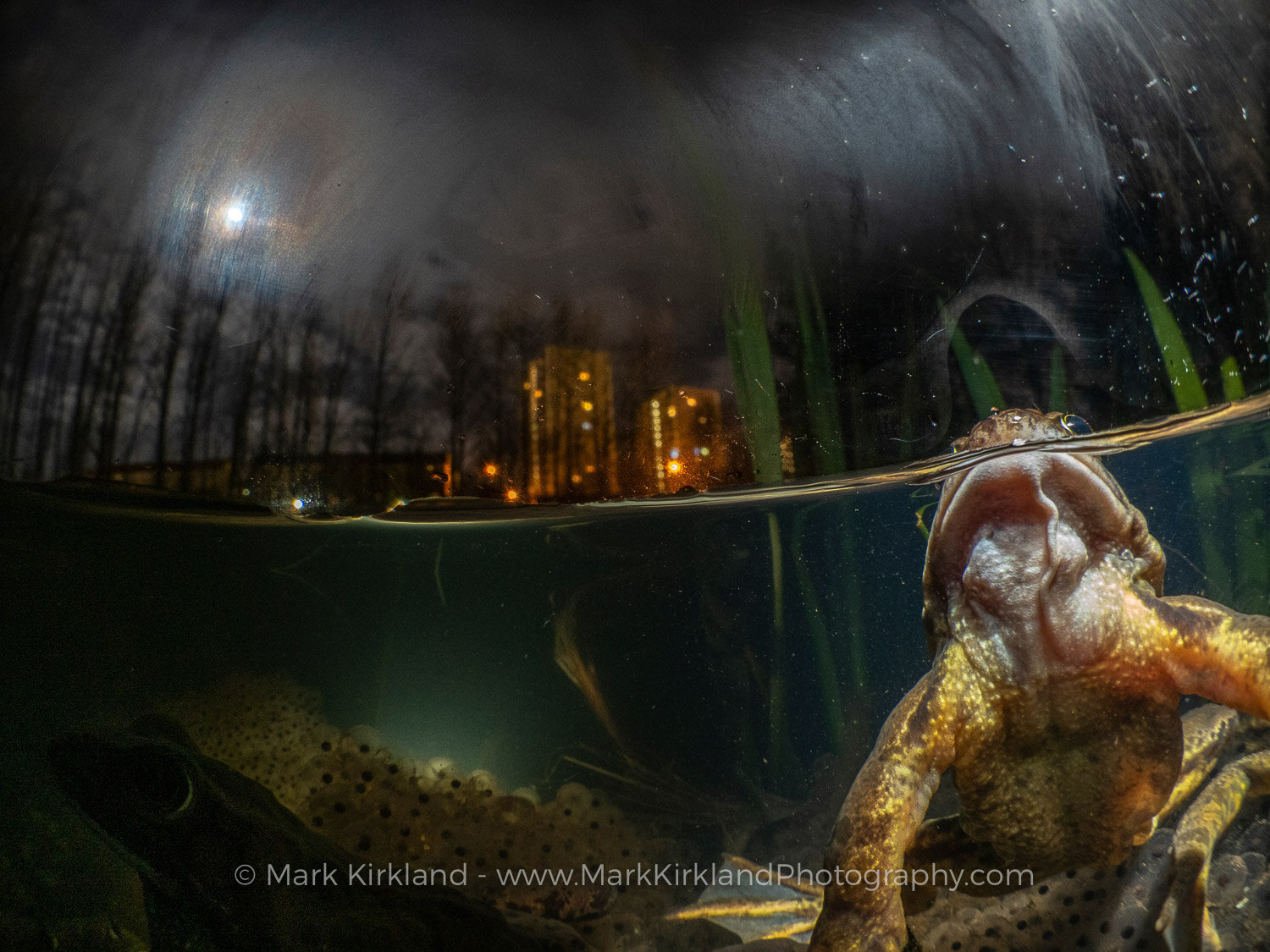
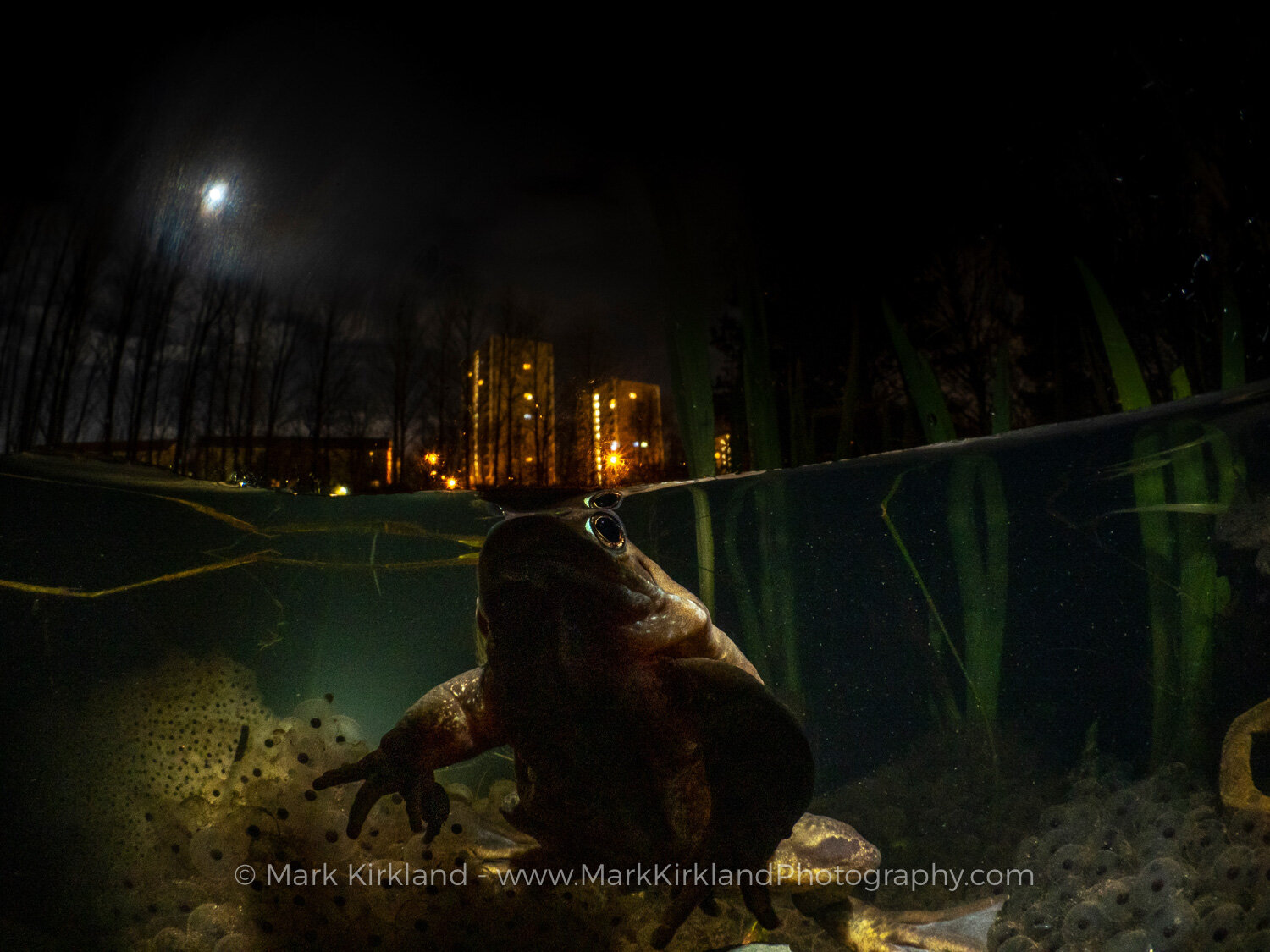
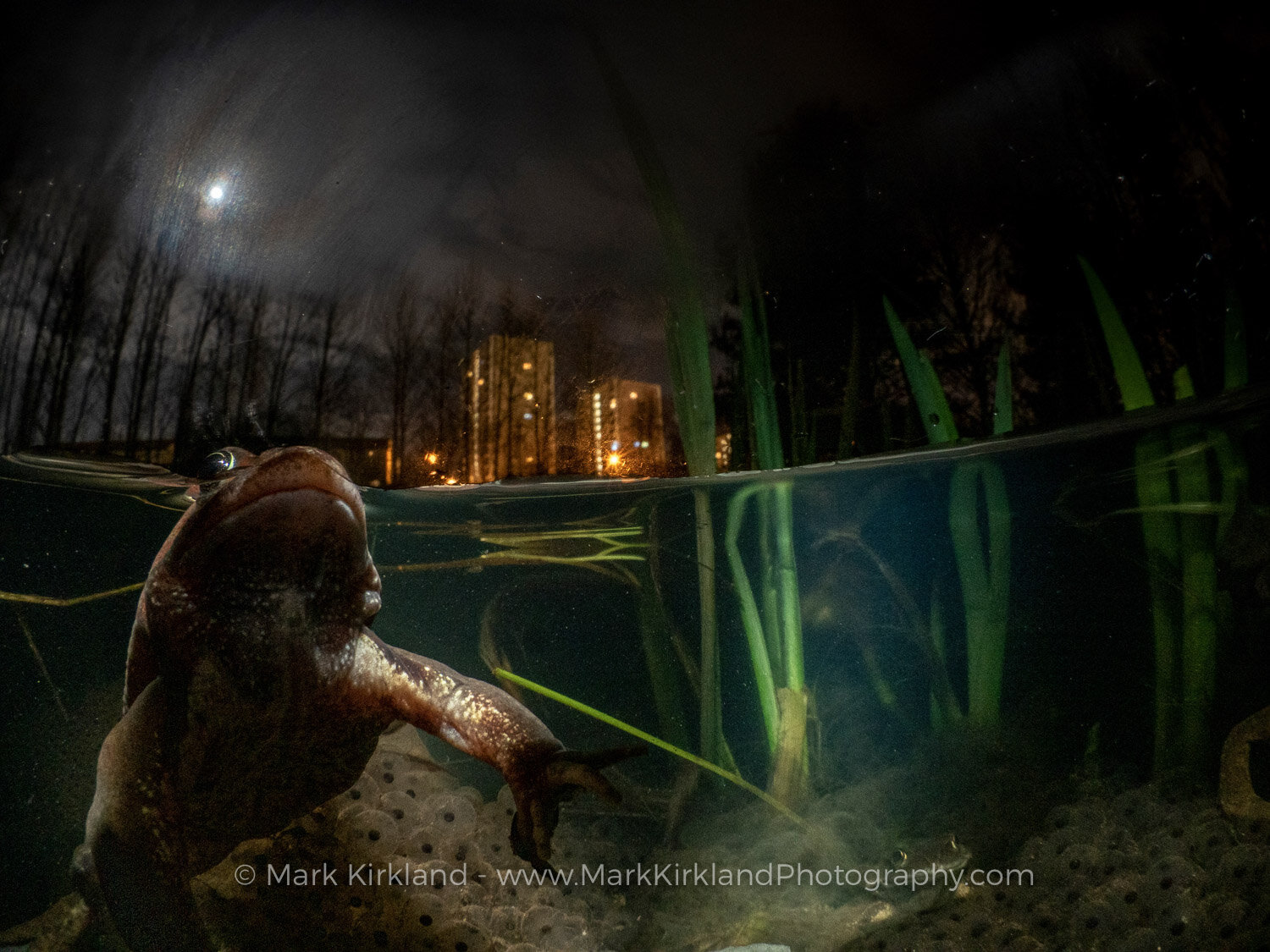
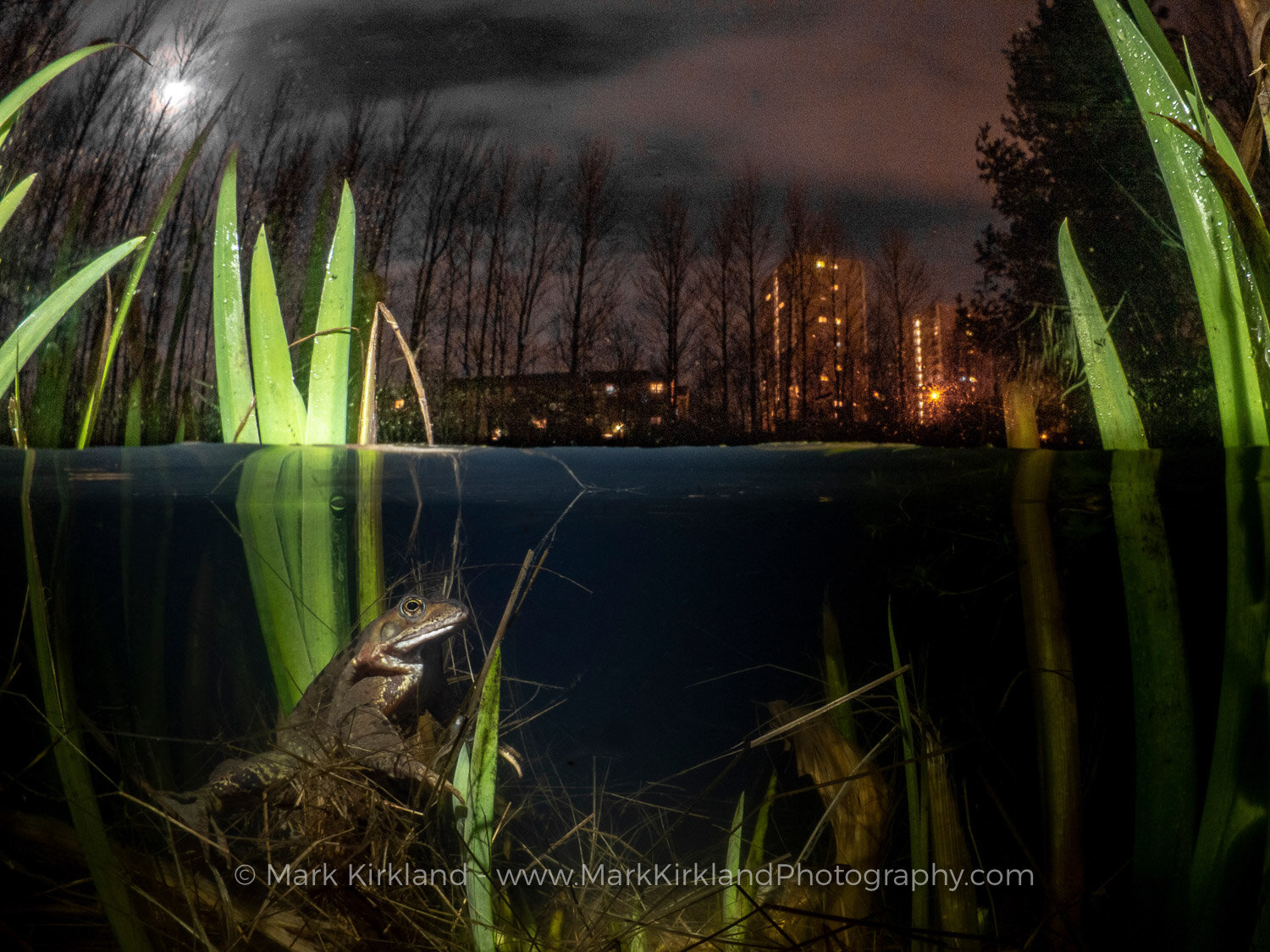
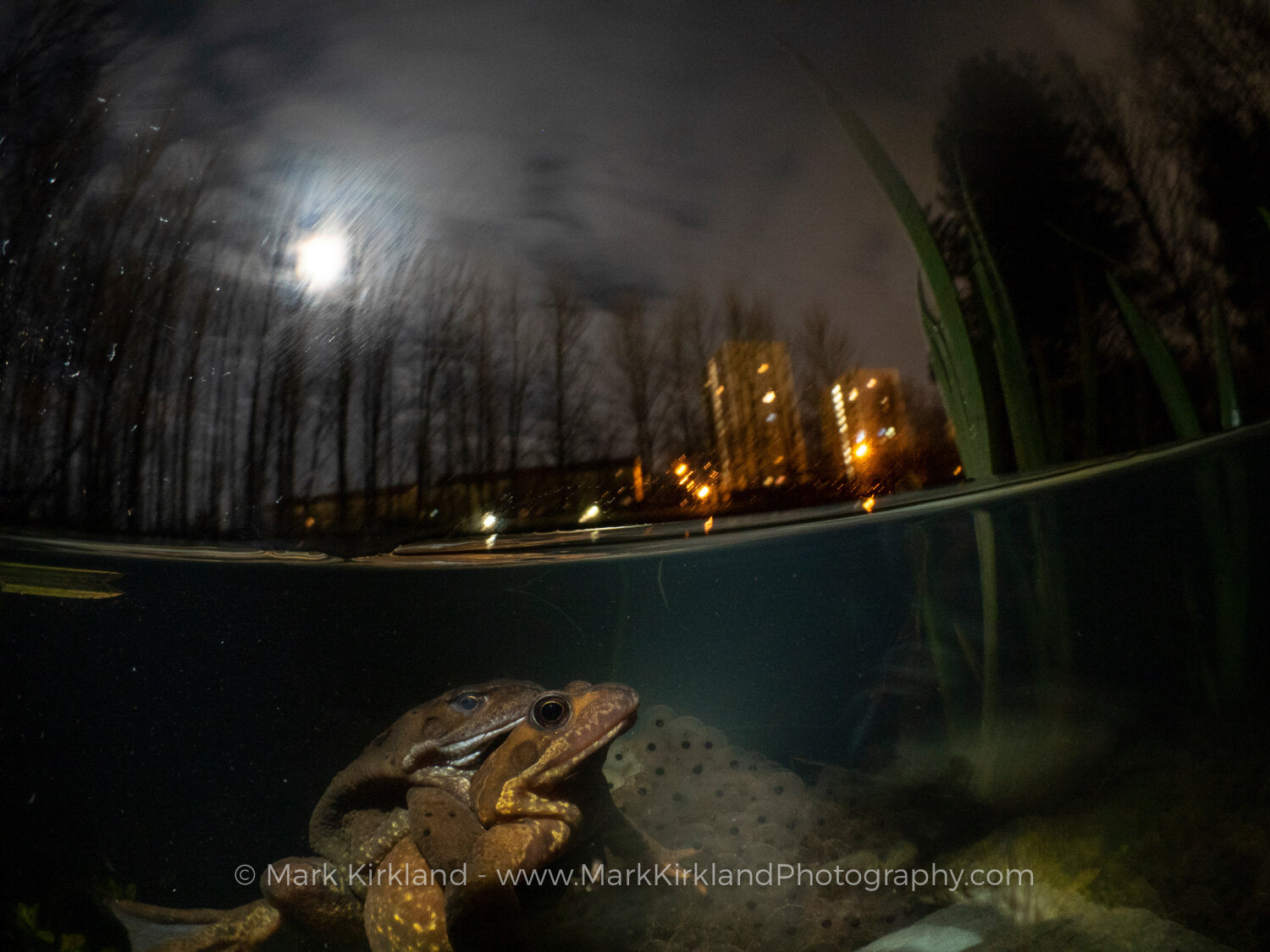
Part 3 | After the Shot
Did you know you had something special in the moment?
I think I've learned to seriously temper my expectations when it comes to what you can see in the back of the camera, but as soon as the picture came up I had that feeling that I'm sure only nature photographers understand when you think you've got a good shot. I knew it was at least the best of the week.
I was honestly just delighted that I'd manage to take an idea, get over the technical challenges and come out with a decent image. It one big experiment really, just to see if it could be done. I didn't really think far ahead into how others would react to it.
Post-processing: can you describe the programmes you used, and what you did please?
Adobe Lightroom. I'm trying to cut down spot editing as much as I can. I'm striving for 'honest' shots - as some might say - as it forces me to improve my photography technique as opposed to letting post processing correct my sloppiness. I'm not a photography purist, I just think my own images where I've had to use spot/area processing always lose something. Maybe it's just in my head, because I know the adjustments I've made, but those shots always lose some of their satisfaction.
Thankfully with this shot I had balanced the lighting okay between the two halves of the frame so I could deal with the exposure globally. That was important to me as I really didn't want to use the adjustment brush to correct either section of the shot. Overall it was a little underexposed so I brought that up, and tweaked the highlights, shadows, whites and blacks to get the contrast right. I also tapped the saturation up a bit. The one part of the shot that really frustrates me, is water droplets on the dome. I hadn't done a very good job of wiping the dome after a brief rain shower, so you can see some in the quarter just above the water line. I did use the spot removal tool to remove a some of the more distracting ones which had really caught the light, but I decided to leave most of the less noticable ones in. It's a MAJOR frustration for me and I was actually gutted when I loaded up on lightroom and noticed the dome wasn't completely clear.
Do you think you could repeat the shot?
Could I do it again? I'm not sure - I could do something similar, but what makes the shot (for me) is the pose of the frog. I think there's a little big of magic going on there. I could set everything up identically and get lucky with the weather, but it'll be the frogs that dictate the composition and tone. That's part of why we do it though isn't it? The unpredictability - for all the months of planning and hours of trying to get the technical side right, I was still completely at the mercy of these little animals to make or break the whole thing.
What has been the 'career' of this shot: talk us through its reception, competition wins, commercial performance...
It's maybe been my most 'successful' image - I took it back in March 2020, just after the major competitions had all been and gone, and with no self-control I had to upload it to my instagram. It got a really good reception - I was quickly asked to write a blog piece on the shoot for Scottish Natural Heritage, which was reproduced (with cover shot) for Underwater Photography Magazine. I've sold a few prints which is cool.
It's currently sitting as a shortlisted image in British Photography Awards which led to Nat Geo Kids getting in touch - they've just ran a double page spread on it in their February issue which was huge for me. (As an aside - they initially asked to use it for free, but I asked for a few quid and they came back with way more than I was expecting). And of course, it got me the British Underwater Photographer of the Year, British Wide Angle and My Backyard Awards at UPY 2021. So.... pretty decent.
My initial reaction after all that is that it's all downhill from here. Genuinely - I've peaked, it's time to pack up and go home. But I'm over that now - in the last few weeks it's actually energised me to get stuck right into the next few projects I have in mind. I've got a few images in my head that I think might be impossible, but either way I'm going to absolutely love finding out.
Is there any aspect of the shot which you think could be improved? If you were trying again today, is there anything you'd do differently?
The water droplets is the one bit that can be improved. I'm not sure there's much else I could do differently, but if I could go back I'd just be a bit more careful about clearing the dome. The rest, as mentioned, is up to the frogs.
